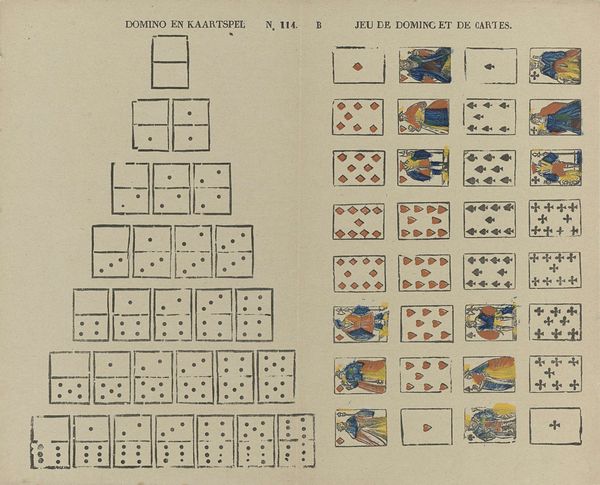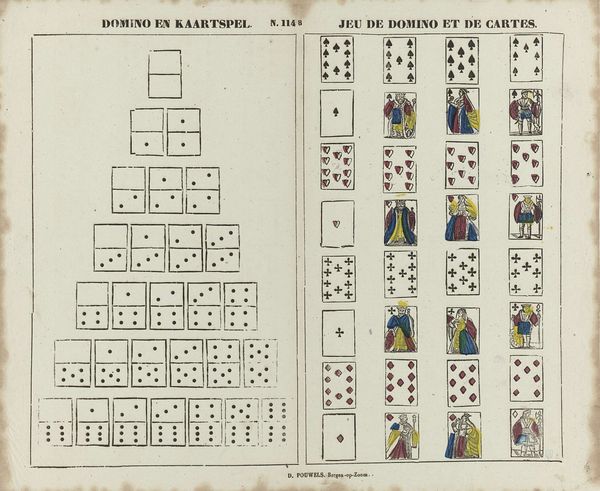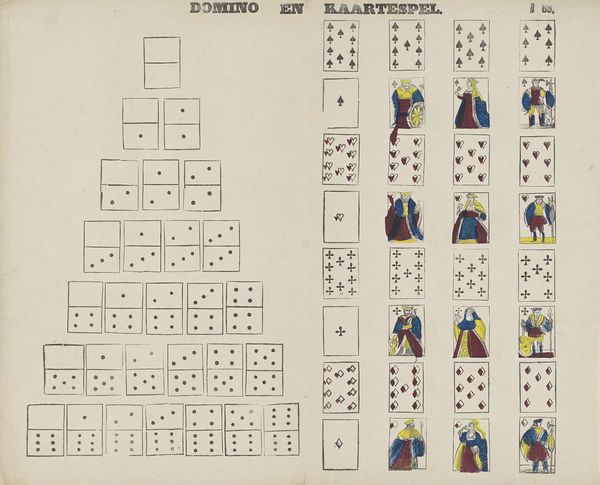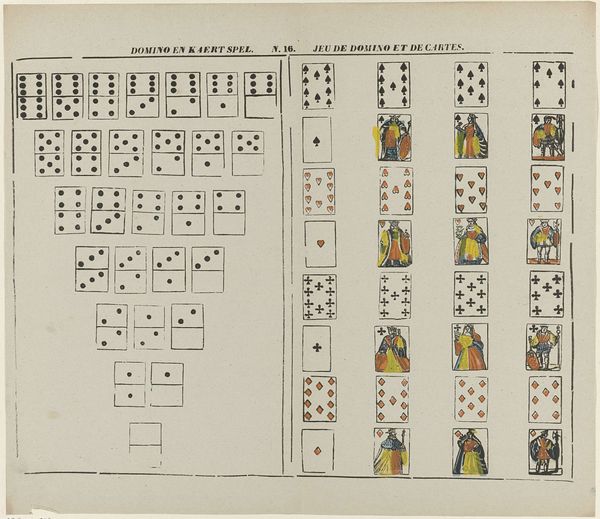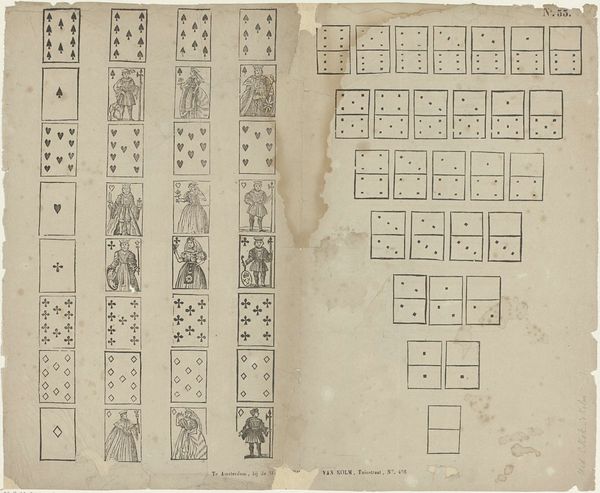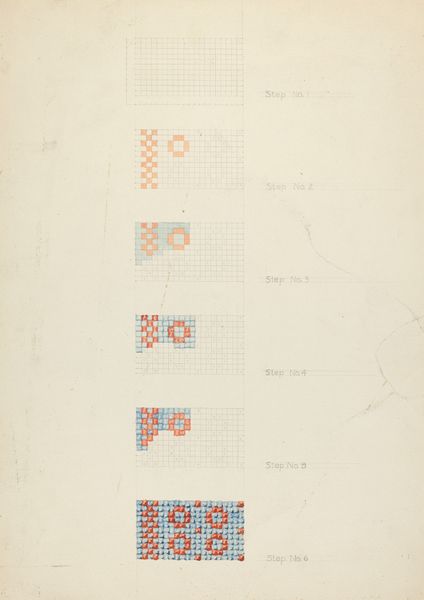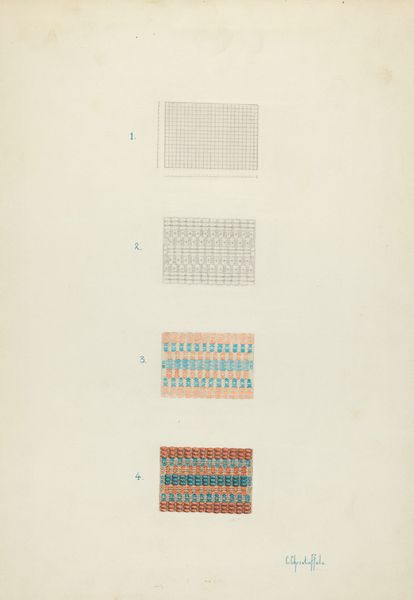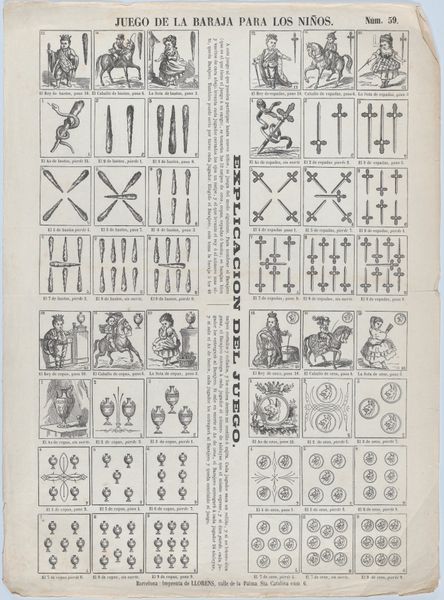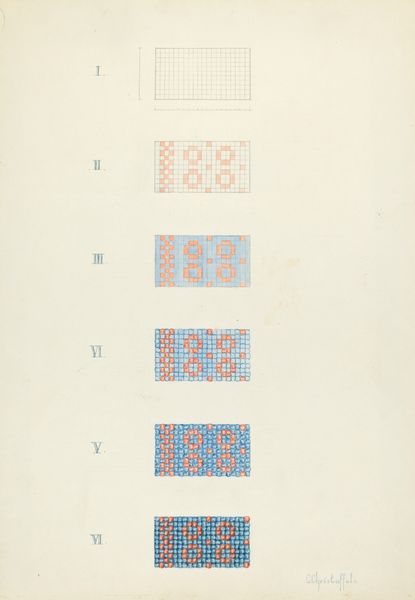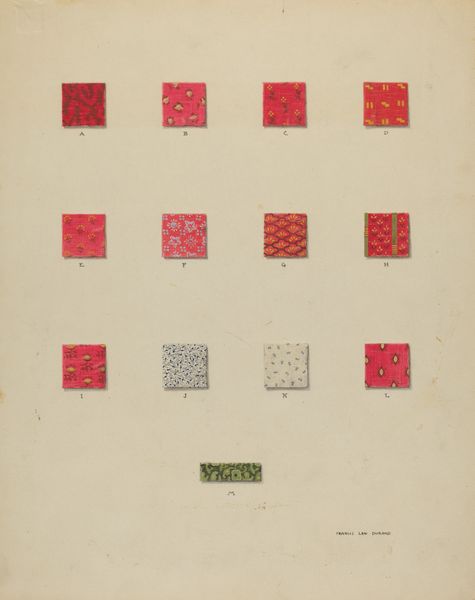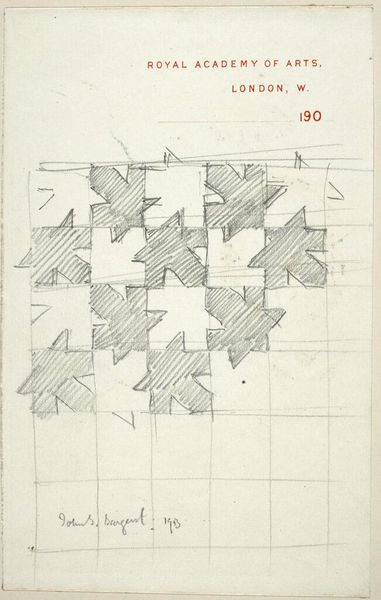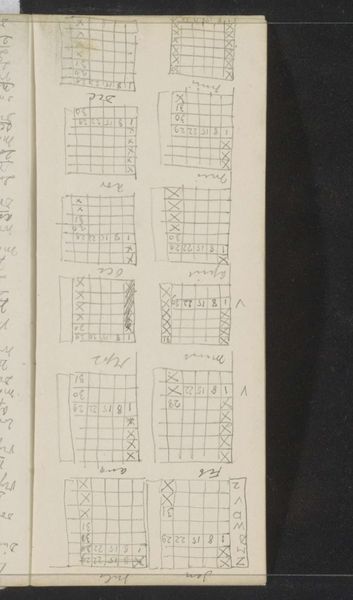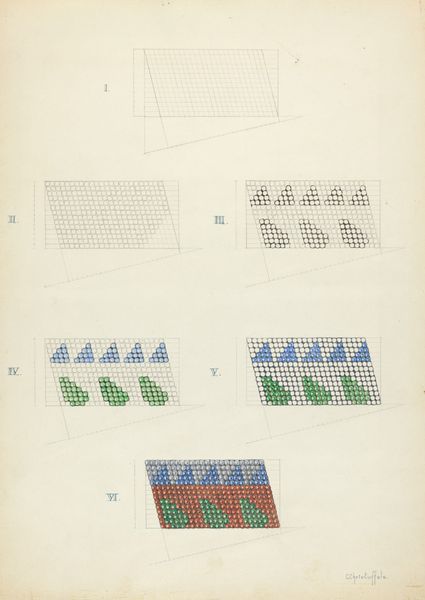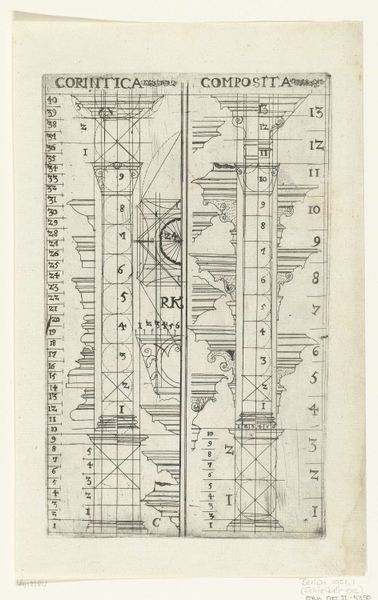
drawing, graphic-art, print, paper, ink
#
drawing
#
graphic-art
#
old-fashioned
#
aged paper
#
ink paper printed
# print
#
old engraving style
#
hand drawn type
#
paper
#
personal sketchbook
#
ink
#
ink colored
#
sketchbook drawing
#
storyboard and sketchbook work
#
sketchbook art
Dimensions: height 335 mm, width 420 mm
Copyright: Rijks Museum: Open Domain
Curator: This print by Franciscus Antonius Beersmans, dating from between 1866 and 1902, titled "Domino en kaartspel / Jeu de domino et de cartes," showcases a fascinating combination of ink and paper. The immediate impression is one of ordered playfulness. What interpretations arise for you when viewing this image? Editor: It's interesting, isn't it? I'm struck by the age of the print, and the ordered way that the dominoes and cards are presented, almost like a teaching aid. There’s also something about games and chance that makes me wonder what their role was during the late 19th century. How would you approach understanding it further? Curator: Considering the period it was created in, it prompts the question: what kind of social function did games serve, and for whom? Games have always been sites of both recreation and power dynamics. The ordered layout could reflect the societal structures of the time. Perhaps these games, seemingly innocuous, served to reinforce particular class or gender roles? Editor: That's a great point. I hadn't considered the potential for reinforcing social structures. Was there a specific audience for this type of print, and how would they have engaged with it? Curator: Exactly! Was it aimed at children, teaching them basic skills but also embedding social norms? Or perhaps at adults, reflecting a leisure activity tinged with underlying social implications? By delving into the historical context of gaming and leisure in that era, we can better understand this artwork’s role in shaping and reflecting society. This opens to conversations on the intersectional relationship of game culture and power. Editor: That’s given me a lot to think about. Seeing it as a reflection of society makes the print so much more engaging. Thanks! Curator: It is artworks like these that truly invite us to critically analyze art's intersection with broader historical forces.
Comments
No comments
Be the first to comment and join the conversation on the ultimate creative platform.
